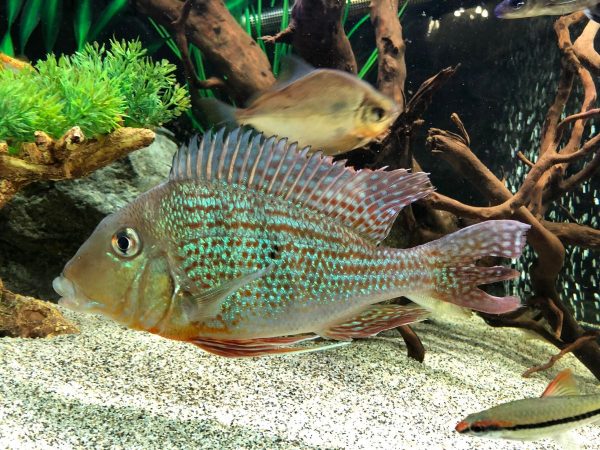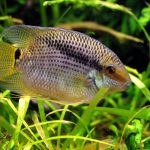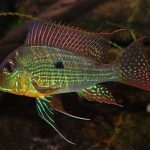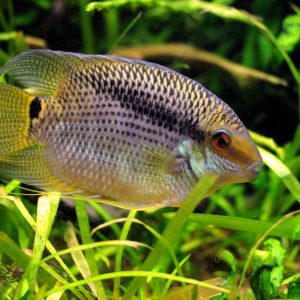- Reviews (3)
- Description
Description
Common names: Mother of pearl eartheater, Surinam Geo
Scientific name: Geophagus surinamensis
Family: Cichlidae
Max size: Around 10″
Origin: South America (Surinam and surrounding areas)
Care: Neutral pH (7.0), temp should be around 80F (27C). This fish needs a very fine substrate in order to thrive in aquarium life. Geophagus species are called eartheaters because they constantly sift through whatever their substrate might be, looking for food. Sinking foods are best for these fish, as their mouth isn’t adapted to eating from the surface, and if forced to do so, the fish may become malnourished from a lack of food. These geos can be kept in a small group or singly, although mine is kept with other fairly large growing cichlids.
Diet: Sinking pellets/wafers or sinking frozen foods are good.
Sexing: Females may have less finnage.
Breeding: They should breed once you have a pair, they are mouth brooders, so don’t expect to see eggs.
Comments: This is a great fish for a dedicated and patient fish keeper. While Surinam geos are bland in color while young, they get More beautiful as they age, and they will grow fin extensions on their claudal, dorsal, and ventral fins (Tail, top fin, and rear bottom fin) They are very active in nature, and have a great personality, they definitely make a good addition to the right tank.







Here is the set up we have. All student done with suggestions from me. They take care of them as part of the class.
They are in a 100 gallon tank.